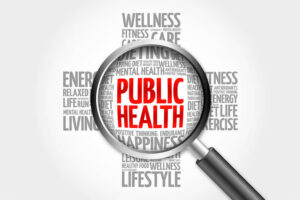Skin is a neuroendocrine organ and harbors an abundant microbiota. Cutaneous bacteria colonize deep layers of the epidermidis and are exposed to skin neurohormones which diffuse in sweat and through the matrix. Since the end of the 20th century, it has been demonstrated that bacteria can detect human hormones and this was investigated in the context of the human skin. Substance P (SP), released in skin by C-type fibers and a determinant of neurogenic inflammation, was studied on cutaneous strains of Bacillus cereus, Staphylococcus aureus and Staphylococcus epidermidis. SP has no effect on bacterial growth but stimulates virulence through interaction with a “moonlighting protein” identified as the thermo unstable ribosomal elongation factor (EfTu). In C-type fibers, SP can be released with the calcitonin gene related peptide (CGRP) and the impact of CGRP was studied on S. epidermidis and S. aureus. As SP, CGRP has no influence on the bacterial growth but up-rises the virulence of S. epidermidis. The bacterial sensor was identified as the chaperone DnaK. It was shown that EfTu and DnaK can be exported from bacteria through MscL mechanosensitive channels, bind with their ligand in the bacterial periplasm and re-integrate in the membrane before promoting the bacterial response. A third family of molecules involved in skin neurogenic inflammation, natriuretic peptides (ANP, CNP), was studied. These peptides control biofilm formation by S. epidermidis, S. aureus and Cutibacterium (Propionibacterium ) acnes under a temperature dependent process and a global schema of the implication of bacteria in neurogenic inflammation was designed. Catecholamines (adrenalin and noradrenalin) are the principal autonomic skin neurotransmitters and these molecules are also detected by bacteria. It was shown that C. acnes is responding to catecholamines by stimulating sebaceous cells lipogenesis suggesting that C. acnes should be a relay between stress and acne. Even steroid hormones can act on bacteria, as shown in the context of the vaginal mucosa where17β-estradiol stimulates biosurfactant production by Lactobacillus crispatus and vaginal cells adhesion.
New dermocosmetic products and medical devices have been developed on the basis of these observations.
Up to 350 words. No references allowed. Abstracts may be submitted at a later date.

- Society

Membership
Support our mission by becoming a member

Public Health Policy Center
Explore the society's public health initiatives

Meet the community
See what our members have been working on
- Journal
- Author Center
- Membership